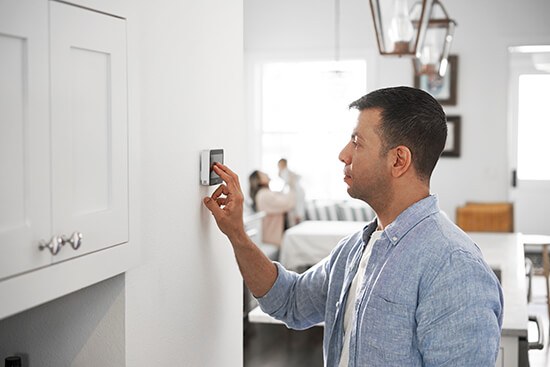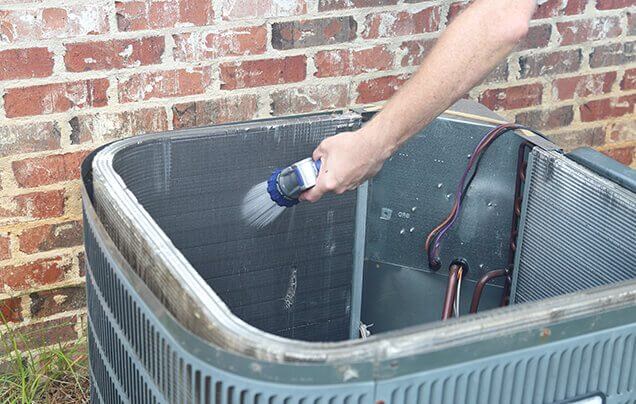What Is the Ideal Temperature for Home Air Conditioning in the Summer?
During the worst of the summer months in Sacramento, it’s not uncommon to deal with temperatures above 90. This heat can be dangerous, especially for those with health conditions. Fortunately, having a home air conditioning system can help to cool down the body and allow your family to be comfortable. The question for many people is where to set their thermostat.
The Ideal Temperature Varies Depending on the Family
Each person’s preference and body temperature are a bit different from the next. While there are recommended averages, they’re not always the best option for everybody. Fortunately, they do give you a starting point. Before we reveal the ideal indoor temperature, we need to explain what “ideal” means.
Ideal, in this sense, means an indoor air temperature that is comfortable for your family while providing energy efficiency for your home. Most homeowners want to be able to strike a balance between their comfort level and how much they’re paying for electricity each month during the summertime season.
The Standard Recommendation
Many air conditioning experts recommend setting your thermostat to 78 degrees Fahrenheit. Test this temperature out for a few days to see how your family feels. If you need your home to be cooler to be comfortable, consider decreasing the setting by one degree each day until you find the right temperature.
It’s important to note that most home centralized air conditioning units are not manufactured to cool a home below 70 degrees Fahrenheit. Setting your thermostat lower will likely cause the evaporator coil to freeze up. A good rule of thumb is to set your thermostat at the highest temperature that your family feels comfortable with. This will help to reduce your energy bills as much as possible.
Optimize the Time That You’re Away
Once you figure out the most comfortable temperature for your home, you can consider optimizing your cooling resources while you’re away from it. When no one is there, such as during the daytime hours when the kids are in school and you’re at work, you should be increasing the temperature on your thermostat. This will reduce the energy usage of your air conditioning system.
Most air conditioning experts recommend increasing the thermostat temperature by about 10 degrees when you’re not at home. This would be approximately 88 degrees while you’re away. Setting the thermostat back down to 78 degrees an hour or so before your return will give your system adequate time to cool your home back down to a comfortable temperature.
It’s important to note that if you regularly set your thermostat to 75 degrees, you’ll need to adjust your “ideal away” temperature accordingly. For example, you’ll only want to set the “maximum away” temperature to 85 degrees, which is 10 degrees from your ideal at-home temperature.
Of course, you may be wondering how you can turn your thermostat back down when you’re not at home. Fortunately, there’s a simple solution for that.
Consider Installing a Programmable Thermostat
If you have a fairly new home air conditioning system, it’s likely that you already have a programmable thermostat installed. However, if you have an older style of thermostat, it’s time to upgrade. Programmable thermostats are great for allowing you to set a variety of desired temperatures, depending on the time of day and day of the week.
The idea behind using a programmable thermostat is that you can simply set up your weekly schedule for when you’ll be home or gone. For example, if your family is not home between 7 a.m. and 6 p.m., you’ll want to set your thermostat at a higher temperature during this time.
Have the thermostat programmed to reduce the setting to your ideal temperature about an hour before you expect to be home. Following our example above, this would mean that you would program your thermostat to reduce to 78 degrees at about 5 p.m. This way, your home air conditioning system has an hour to cool down before you arrive.
Your Home Temperature is Unlikely to Reach the Maximum
It’s not uncommon to be a bit confused when first setting the ideal temperature for times when you’re away from home. The reality is that turning up the thermostat from 78 degrees to 88 degrees simply stops your air conditioning system from running when you’re away. In most cases, your home temperature won’t jump the whole way up to 88 degrees.
Rather, it may go to a high of 81 degrees over the time period that you’re not at home. By having your thermostat reduce the temperature back to 78 degrees about an hour before you expect to arrive home, your air conditioning system will have adequate time to cool back down. Simply setting the thermostat to 88 degrees when you’re away will assist you in giving a maximum temperature that your home won’t go above.
In the rare instance that your indoor temperature does exceed the maximum of 88 degrees, the air conditioning system will kick on. This will cool your home back to 88 degrees, which is within a manageable range for your system to handle when it comes time to drop back to 78 degrees for your arrival.
Energy-Efficiency Tips for Keeping Your Home Cool
Apart from optimizing your energy usage by setting desired thermostat temperatures throughout the day, there are many other tips that you can employ to reduce your summertime energy bills. First, you should consider a whole-home dehumidifier.
While your home air conditioning system does work to remove some of the moisture from the air, it will have trouble keeping up on very humid days. You can curb this problem by installing a whole-home dehumidifier. This will remove excess moisture in the air and allow the body to feel cooler. When it’s overly humid inside, your body can feel as though it’s 2 – 8 degrees warmer than it actually is.
Ceiling fans are another great solution for reducing your energy bills. By installing ceiling fans in bedrooms and other highly trafficked areas of your home, you can help your body feel cooler than the environment actually is. Make sure that you set the fan in a counterclockwise direction, which will angle the air to blow in a downward direction. This wind chill effect will make it feel anywhere between 5 – 10 degrees colder than the temperature inside your home.
Protecting the inside of your home from direct sunlight is imperative to keeping your power bills low. Direct sunlight can heat up your home drastically in a short period of time. It’s highly advisable to block out direct sunlight with blinds or curtains.
Excellent AC Maintenance
There’s no denying the fact that Sacramento, CA, endures some very hot summer weather. Many residents rely on their home air conditioning systems to remain comfortable during the worst of the season. As long as you have a quality air conditioner contractor like Crystal Blue Plumbing, Heating & Air to rely on, you can rest assured that your summer comfort will always be within reach. In fact, we provide a full range of plumbing services as well as air conditioning, heating and indoor air quality installation, maintenance and repair. Call us today for any of these options.








